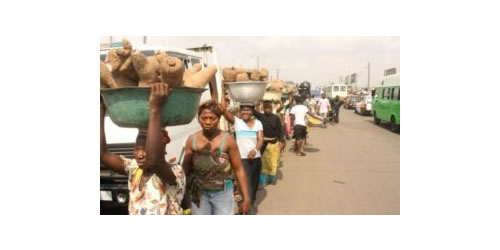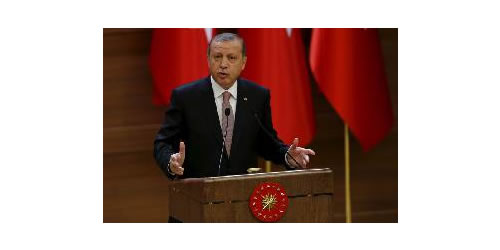The agony of ‘Kayayei’

Each year, many women and girls in Ghana join the millions across Africa who are migrating from rural to urban centres in search of economic opportunities in some of the country’s southern commercial centres.
But far from finding jobs, homes and safety in these cities, many of them – largely unskilled and uneducated – find themselves doing back-breaking work, including so-called ‘Kayayei’, female porters forced to carry heavy luggage around cities in order to earn a living.
Major decentralisation took place in 1986 in Ghana which, as a consequence, created a few commercial hubs throughout the country away from Accra. But in many cases, these urban centres are still not fully equipped to deal with the vast amount of women and girls travelling from Ghana’s rural areas.
While a lot has been done to tackle some of these issues, Ghana still needs to make more effort to create opportunities for the uneducated and unskilled women that make the journey from the rural north to its urban centres – women and girls that often find themselves off the grid and vulnerable to abuse,” she says.
According to a report published by the World Bank in April 2015, Ghana’s urban population has more than tripled in the last three decades, rising from four million to nearly 14 million, accounting for over half of the country’s population of approximately 27 million.
While urbanisation has been relatively well managed, and poverty in some major commercial hubs has even fallen – such as a 20-percentage-point decrease in Accra’s poverty incidence between 1991 and 2012, according to the World Bank – many have been left out of this development as uncoordinated urbanisation has led to the creation of slums, a lack of basic services and insufficient transport structures in some places.
While accurate numbers of how many of these vulnerable women, such as the Kayayei, fill Ghana’s cities are difficult to come by, one trend has emerged: internal migration of women and girls in Ghana from rural to urban centres, once dominated by men, has seen a significant increase.
In 2010, data from Ghana’s last census showed that just under 50% of all internal migrants were women, higher than in the majority of other African countries. Some academics have gone as far as to refer to this as the ‘feminism of migration’ in Ghana.
The key fact remains that a lot of women and girls are making their way into cities because they are not making enough money and they don’t see opportunities for themselves in Ghana’s rural north.
“But one way in which we can work around this is through meaningful financial inclusion. We need to give women the chance to develop businesses in sectors such as agriculture – away from just subsistence farming – by providing them with affordable and accessible financial solutions in rural areas.This is one way in which we can tackle some of the mounting pressure on Ghana’s cities,”Tola Oni, a Nigerian based entrepreneur and a Mandela Washington Fellow, has stated in an interview with Business Day.
According to a 2010 survey of the Kayayei, conducted by the Ghana Federation of the Urban Poor, out of the girls surveyed, the majority – 58% – were engaged in farming prior to their migration. While continuing with education should be a priority for Ghana’s administration, financial inclusion to develop the country’s agricultural sector by women could be a viable alternative to dealing with overcrowded cities.
Africa’s mobile banking revolution has greatly increased access to financial services and products for Africa’s rural population, but there are various initiatives out there that specifically tackle access for women.
Banks are central to the drive. Access Bank Ghana launched the ‘W’ Initiative in March 2015, which seeks to create specialised banking products for women and promote gender equality. Since 2009, Ecobank has been involved in the Women in Business programme sponsored by the International Finance Corporation, which not only focuses on the elevation of women inside the bank, but also on the financial inclusion of women on the continent.
The presence of microfinance products, as well as cooperatives for the implementation of fair market prices, is also increasing in Ghana, helping support women through financial inclusion.
“But we also need to look beyond microfinance loans for women, which often come with very high interest rates, up to 35% in some cases. Concessional finance can be achieved, but we will need more coordination and cooperation from all institutions involved, be that banks, non-governmental organisations, development finance institutions and governments,” MrTola added.
“While this may sound obvious, increased cooperation is lacking and women are bearing the brunt of this,” he added.
Women’s financial inclusion also has the added benefit of bringing a huge portion of the population into Ghana’s growing formal economy. With a population of around 27 million, only around one million of these people are part of the formal economy, paying tax and ultimately contributing to Ghana’s tax revenue.
Bringing women into Ghana’s formal economy will add to this base and potentially have huge benefits to economic growth. Women are genuine consumers. Tap into their potential and your business will thrive; give them access to credit and the banking sector will thrive.
“We can’t control urbanisation in Ghana and elsewhere without creating opportunities and implementing financial inclusion for women. It’s not rocket science,” Mr Tola stated.
Source: Business Day/newsghana




